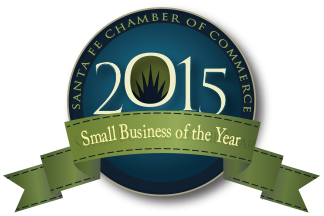24 Jul Tips to Achieve (the Elusive) Work-Life Balance
 “What impact has working from home had on productivity and creativity?” A recent study conducted by researchers from Harvard Business School, MIT Media Lab, and McCombs School of Business at the University of Texas at Austin explored this question with more data than has historically been available.
“What impact has working from home had on productivity and creativity?” A recent study conducted by researchers from Harvard Business School, MIT Media Lab, and McCombs School of Business at the University of Texas at Austin explored this question with more data than has historically been available.
The Study
The researchers state: “We decided to explore how employees have fared since they began working virtually. To that end, we started surveying a diverse group of more than 600 U.S.-based white-collar employees during the second half of March and have continued to do so every two weeks since then. (This article is based on results collected through May.) Approximately half of our respondents are women, and half are men; they hail from 43 states; nearly half are married; and more than a third have children. About 40% hold management positions. We have been asking them about their job satisfaction, work engagement, perceptions of their own performance, conflicts with colleagues, stress, negative emotions, and current living situation, among other questions.”
The results of this extensive study are fascinating. In general, they find that work is OK! The survey indicates that job satisfaction and engagement fell steeply during the first two months of the pandemic and shelter at home orders, but then recovered. Many respondents even report higher happiness and productivity working from home.
The Challenge
The transition involved leveling up communication skills, remote management strategies, adapting to some technology, and maintaining work- life balance. While we’re collectively figuring most of it out, work-life balance remains elusive (perhaps because it wasn’t a huge strong point under normal circumstances).
The workday significantly increased at the beginning of all-virtual work: In the weeks immediately after the lockdown began, only half of employees were able to maintain a 10-hour workday or less, whereas nearly 80% had been able to do so previously. These patterns have started to trend back to pre-lockdown levels, although the workdays are still 10% to 20% longer on average.
10% to 20% longer on average! If you are one of the many people struggling to keep work circumscribed, time management coach Elizabeth Grace Saunders suggests following these four steps.
Step 1: Define “After Hours”
Saunders suggests you do this by defining and thinking though the non-work goals you have for a daily and weekly basis. How much time do you want for family, friends, exercise, cleaning, sleeping, etc? Work that time into your schedule and protect it. Obviously, getting work done is important. But, if COB is kind of arbitrary these days, define it by when you want to start working on your other goals for the day.
Step 2: Have Mental Clarity
Be really clear on what needs to get done, when, and the steps required to succeed. Make use of project management apps, calendars, or your own system of sticky notes. The point is to avoid Middle of the Night Dread and start your days with organized purposiveness. Saunders suggests an end-of-day wrap up and plan of action for the day to come. Then leave it at that.
Step 3: Communicate with Your Colleagues
Even if your job requires more constant accessibility, you can communicate how you would like to be reached. Saunders suggests something like, “It’s fine to text me during the day with questions, but after 6:30 please send an email unless it’s urgent.” That way you’ll know only one channel of communication is worth fretting over “after work.”
Step 4: Get Work Done at Work
“It’s exceptionally difficult, if not impossible, to not be distracted about work when you’re stressed out because you haven’t gotten your work done,” says Saunders. To avoid this vicious circle, guard your time. Saunders recommends timeboxing. Make (and keep) “meetings” with yourself when you can focus on getting things done. The time you spend organizing and prioritizing your projects from the mental clarity step will come in handy here. And communicating that you’re Do Not Disturb (unless it’s an emergency) helps your colleagues help you stay focused.
One interesting finding from the Work From Home study is that we’re all in this situation together. It’s not just a platitude. If we’re all adapting to working from home, no one is at a special disadvantage because of working from home. While this doesn’t exactly imply equity, it might help you relax enough to take some care of yourself.









